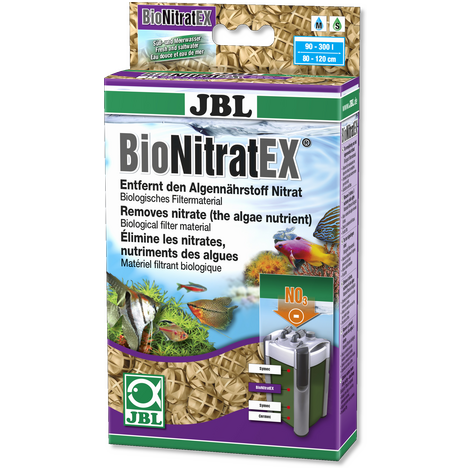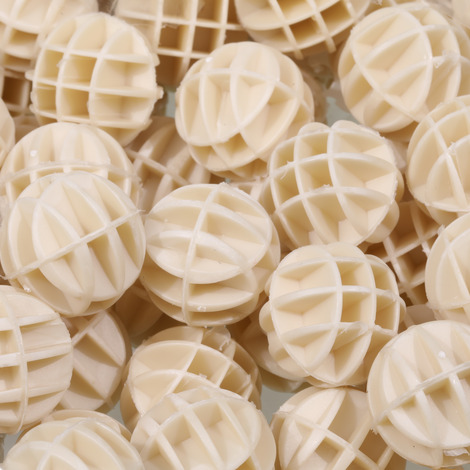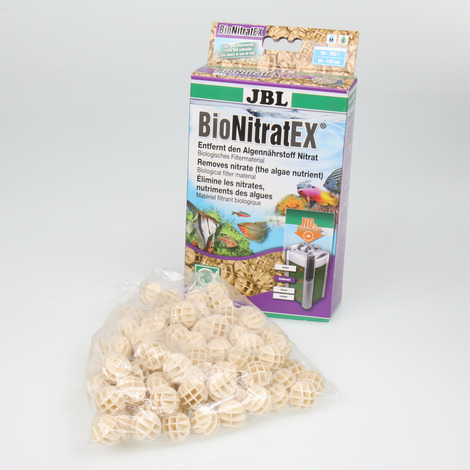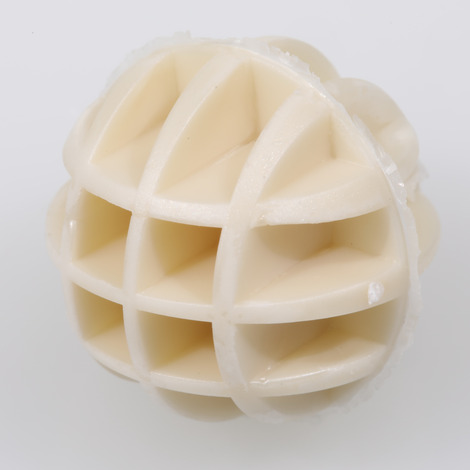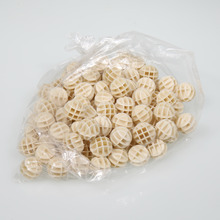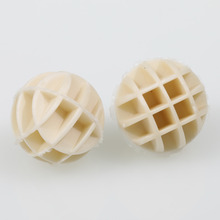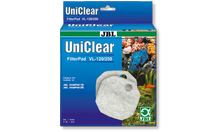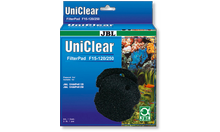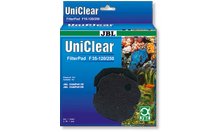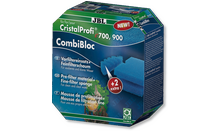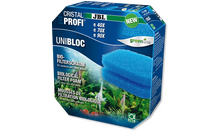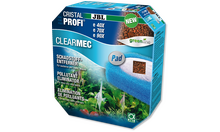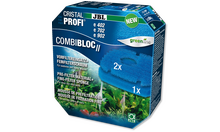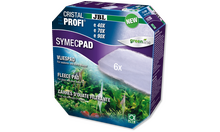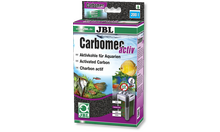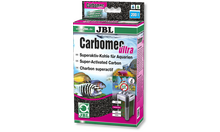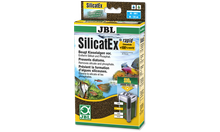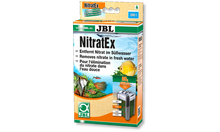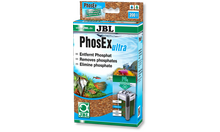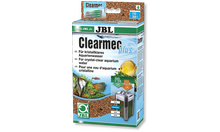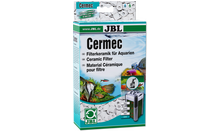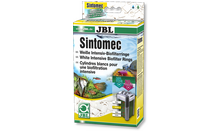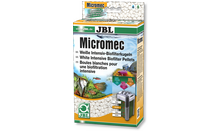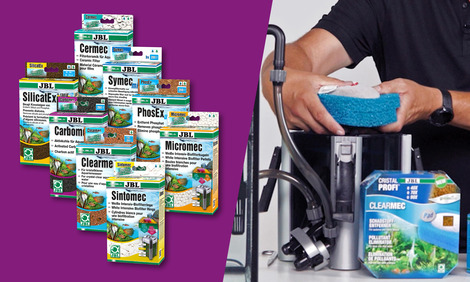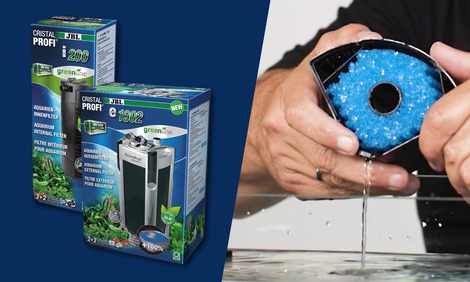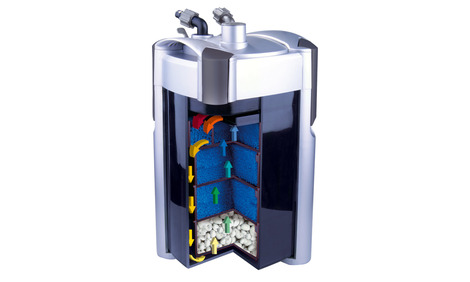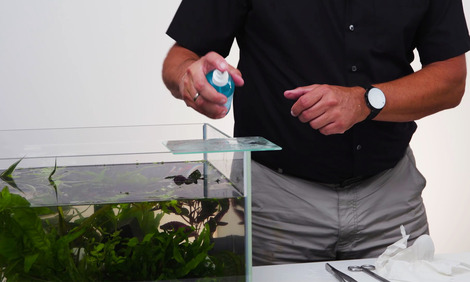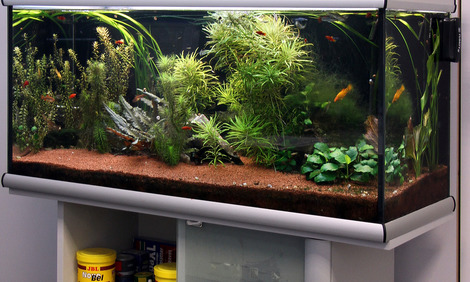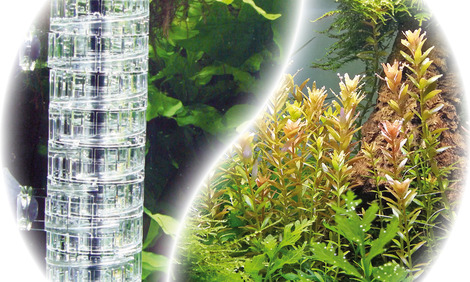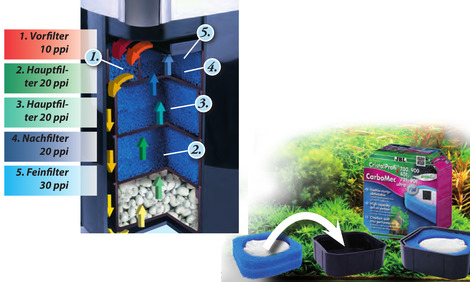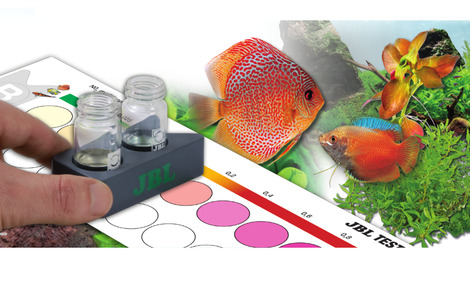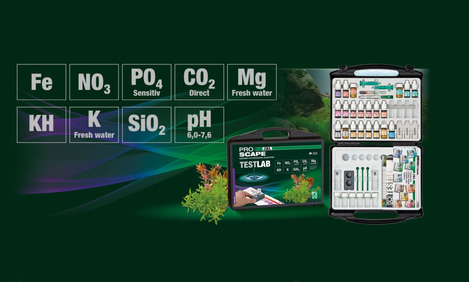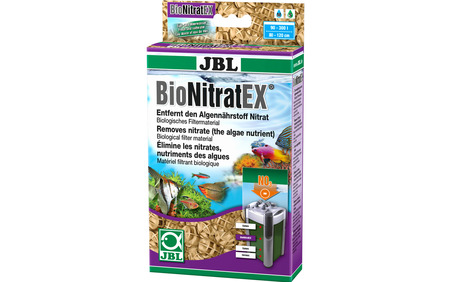If you don’t get anything to eat you’ll starve to death:
Nitrates and phosphates form main nutrients for algae. If one or both nutrients are withdrawn from the water, the algae will stop growing! However, bacteria only break down nitrate under specific conditions. Only when there is no longer any oxygen, but there is a carbon source (a nutrient for bacteria) available, do the bacteria remove the oxygen from the nitrate, thus breaking it down.
That’s how JBL BioNitratEx works:
Bacteria settle on the surface of the JBL BioNitratEx balls within about 4 weeks and form a thick biofilm. Beneath the biofilm a low-oxygen zone forms, in which the bacteria then switch to "nitrate respiration" to degrade the algae-promoting nitrate (NO3). The bio balls serve the bacteria as food and the nitrate serves as a supplier of oxygen. That’s why the bio balls become smaller as time goes by (easy to check visually) and disappear completely. This takes about 6-12 months, depending on the nitrate pollution. Then you’ll need to replace the bio balls.
Snails: If lots of snails reach the JBL BioNitratEx balls they will eat the biofilms from the balls’ surface. As a result oxygen will reenter the lowest bacterial layers, which then will no longer need to dissolve the oxygen from the nitrate in order to break it down with it. If you have a lot of snails it is better to put the JBL BioNitrat Ex balls into a fine bag to block the snails’ access.
The difference to JBL NitratEx:
JBL BioNitratEx works on a purely biological basis through bacterial nitrate breakdown. In contrast JBL NitratEx is a synthetic resin which binds nitrate from the water (freshwater only!) and replaces it with harmless chloride (ion exchanger function principle). The advantage of this system is that it works quickly and you can use it to remove nitrate from tap or well water etc.
JBL BioNitratEx
Biological filter material for the removal of nitrate
- Biological filter material which is degraded by bacteria to remove algae-promoting nitrate from freshwater and marine water
- Just add filter material to internal or external filter and only refill when it has been degraded by the bacteria after approx. 6 month
- Bacteria settle on the bio balls and form a thick biofilm. Underneath the oxygen level drops, so that the bacteria there can remove oxygen from the nitrate and thus degrade it
- Water stabilising effect: since pH decreasing acids are created during the bacterial degradation processes, the bio balls contain acid binding minerals to stabilise the water
- Package contents: 100 bio balls for the nitrate breakdown in 200-300 litres aquarium water; 1 ball / 2-3 litres of water
